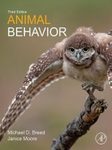![Biological Distance Analysis Biological Distance Analysis]()
Click to have a closer look
About this book
Contents
Customer reviews
Biography
Related titles
About this book
Biological Distance Analysis: Forensic and Bioarchaeological Perspectives synthesizes research within the realm of biological distance analysis, which is an analysis that employs data derived from skeletal remains to reflect population relatedness (similarity/dissimilarity) through the application of multivariate statistical methods. The book highlights current work within the field and discussing future directions. The book is divided into three main sections. The first section clearly outlines datasets and methods within biological distance analysis, beginning with a brief history of the field and how it has progressed to its current state. The second section focuses on approaches using the individual within a forensic context, including ancestry estimation and case studies. The final section concentrates on population-based bioarchaeological approaches, providing key techniques and examples from archaeological samples. Biological Distance Analysis also includes an appendix with additional resources available to those interested in biological distance analyses.
Contents
Section 1. Biodistance Data, Datasets, and Analytical Methods
Chapter 1. A Brief History of Biological Distance Analysis
Chapter 2. Biological Distances and Population Genetics in Bioarchaeology
Chapter 3. Craniometric Data Analysis and Estimation of Biodistance
Chapter 4. Advanced Methods in 3-D Craniofacial Morphological Analysis
Chapter 5. Cranial Nonmetric and Morphoscopic Data Sets
Chapter 6. Dental Morphology in Biodistance Analysis
Chapter 7. Dental Metrics in Biodistance Analysis
Chapter 8. Do Biological Distances Reflect Genetic Distances? A Comparison of Craniometric and Genetic Distances at Local and Global Scales
Chapter 9. Missing Data Imputation Methods and Their Performance With Biodistance Analyses
Section 2. Biodistance in a Forensic Setting
Chapter 10. Forensic Classification and Biodistance in the 21st Century: The Rise of Learning Machines
Chapter 11. Forensic Ancestry Assessment Using Cranial Nonmetric Traits Traditionally Applied to Biological Distance Studies
Chapter 12. Biological Distance, Migrants, and Reference Group Selection in Forensic Anthropology
Chapter 13. The Craniometric Implications of a Complex Population History in South Africa
Chapter 14. Complexity of Assessing Migrant Death Place of Origin
Chapter 15. Estimating Ancestry of Fragmentary Remains Via Multiple Classifier Systems: A Study of the Mississippi State Asylum Skeletal Assemblage
Chapter 16. Biological Distance Analysis, Cranial Morphoscopic Traits, and Ancestry Assessment in Forensic Anthropology
Chapter 17. Dominance in Dental Morphological Traits: Implications for Biological Distance Studies
Section 3. Biodistance and Population Studies
Chapter 18. Postmarital Residence Analysis
Chapter 19. Population Structure During the Collapse of the Moche (AD 200-850): A Comparison of Results Derived From Deciduous and Permanent Tooth Trait Data From San Jose de Moro, Jequetepeque Valley, Peru
Chapter 20. Alternate Methods to Assess Phenetic Affinities and Genetic Structure Among Seven South African "Bantu Groups Based on Dental Nonmetric Data
Chapter 21. Crossroads of the Old World: Dental Morphological Data and the Evidence for a Eurasian Cline
Chapter 22. A Baffling Convergence: Tooth Crown and Root Traits in Europe and New Guinea
Chapter 23. Population Biodistance in Global Perspective: Assessing the Influence of Population History and Environmental Effects on Patterns of Craniomandibular Variation
Chapter 24. A Biodistance Analysis of Mandibles From Taiwan, Asia, and the Pacific: A Search for Polynesian Origins
Chapter 25. The Biocultural Evolution in the Osmore Valley: Morphological Dental Traits in Pre-Inca Populations
Customer Reviews
Biography
Marin A. Pilloud, PhD, RPA, D-ABFA is currently an assistant professor of anthropology at the University of Nevada, Reno. Dr. Pilloud's research is broadly focused on the application of dental morphology and metrics to answering research questions in both bioarchaeology and forensic anthropology. She has active bioarchaeological research programs in Neolithic Anatolia and prehistoric California, and within forensic anthropology she is interested in the use of teeth in the estimation of ancestry.
Joseph T. Hefner, PhD, RPA, D-ABFA received his Ph.D. from the University of Florida in 2007. He is currently an assistant professor of anthropology at Michigan State University. Dr. Hefner's research interests focus on morphological variation in cranial form within and between modern human populations. In particular, he works with morphoscopic traits, parametric and nonparametric classification statistics, and machine learning methods useful for the assessment of ancestry in forensic anthropology.



































